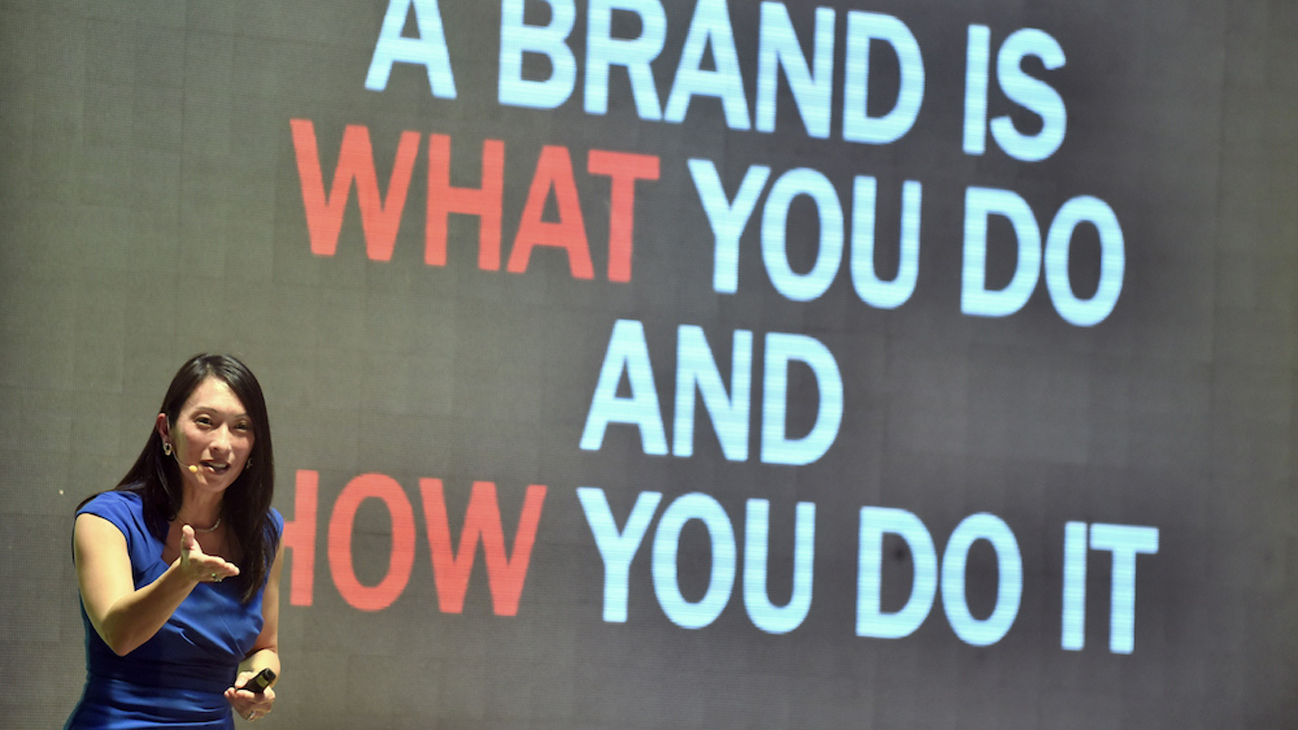Now more than ever, business leaders are looking for fresh ideas, new understanding, and actionable insights to jumpstart their business. Denise Lee Yohn inspires, informs, and instructs them with a completely different way of thinking about their business. Blending a fresh perspective, twenty-five years of experience working with world-class brands including Sony and Frito-Lay, and a talent for inspiring audiences, Denise is a leading authority on building and positioning exceptional brands. Below, Denise explains the concept of “loyalty language” and what it means to your business:
Over a third of customers say they would not be loyal to a brand if it weren’t for the brand’s loyalty program, according to Bond Brand Loyalty. Bond also reports 68% of Millennials wouldn’t be loyal to a brand without a strong loyalty program. Research by talech shows 87% of consumers want a customer loyalty program. So it’s no wonder 91% of companies have some sort of customer engagement or loyalty program (Experian).
But 67% of consumers are not satisfied with current loyalty programs, according to Collinson Latitude. And only 45% of retail loyalty program members are very satisfied with their program experience (Bond).
This could be because companies are speaking the wrong loyalty language. You see, brand loyalty is a lot like love. It’s elusive but valuable. It’s emotional but most apparent in action. It’s inspired, not instilled, but you can increase your chances of getting it. It’s fickle — or, at least, it may seem like it. Customers who seem loyal may abandon their “favorite” brands, just as partners sometimes suddenly leave their beloveds.
So when marriage counselor Dr. Gary Chapman observes in his book, The 5 Love Languages: The Secret to Love that Lasts, “People speak different love languages,” he could be talking about brand loyalty. He writes that each of us speaks an “emotional love language” and he concludes “There are five emotional love languages — five ways that people speak and understand emotional love.” The five are:
- words of affirmation — This language uses words to affirm other people.
- acts of service — For these people, actions speak louder than words.
- quality time — This language is all about giving the other person your undivided attention.
- receiving gifts — For some people, what makes them feel most loved is to receive a gift.
- physical touch — To this person, nothing speaks more deeply than appropriate touch.
Chapman observes, “Seldom do a husband and wife have the same primary emotional love language. We tend to speak our primary love language, and we become confused when our spouse does not understand what we are communicating…We cannot rely on our native tongue if our spouse does not understand it. If we want them to feel the love we are trying to communicate, we must express it in their primary love language.”
What if the same were true about customers’ relationships with brands? Most loyalty programs are based on doling out discounts based on previous purchases, but what if discounts was only one of the benefits customers seek? What if different customers have different loyalty languages and that’s way some brands are ineffective in cultivating customer loyalty? Maybe the five loyalty languages could be:
- perks — This language involves giving away products and other benefits (e.g., free upgrades and airline club memberships given to frequent flyer program members.)
- recognition — Some people just want to achieve the status (like George Clooney’s character in the movie Up In the Air who aspired to reach 10 million frequent flyer miles.)
- personalization — This language communicates with customers personally and offers products and service tailored for them (e.g., Amazon Prime personalizes communications and selections to its members.)
- access — To this person, greater loyalty yields exclusive access to special services and offers (e.g., American Express Centurion members get to call on a dedicated concierge and travel agent.)
- discounts — This language culminates in discounted or free products (e.g., “buy 10, get the 11th free” and other similar payouts.)
Using this construct, savvy companies wouldn’t just default to a discount-based loyalty program — nor would they allow technology and capabilities to drive program design. Most importantly, they wouldn’t try to use a one-size-fits-all approach and expect all customers to respond to a program that speaks only one language.
Marketers would need to determine which loyalty language their target customers speak primarily — or they would target specific segments with different programs or different features of a program. Perhaps the simplest way would be to design a program with different language, i.e., reward, options and allow customers to opt-in based on their own preferences.
Also with the loyalty language construct, companies would need to recognize that effective loyalty programs deliver more than functional elements such as discounts and rebates. Companies would develop loyalty programs that incorporate emotion, creativity, and empathy. They would start with customers’ needs first — not business objectives — and then design programs that fulfill them in ways that produce the desired business result.
Bond’s Brand Loyalty report explains, “Relying on these functional elements is a pitfall to which many brands have succumbed – locked in to an endless cycle of outspending the competition on discounts. The challenge for brands is that discounts are not sustainably differentiating.” The firm’s study found that a loyalty program that “meets my needs” is just as important. Its report concludes, “Programs that innovate to address customer needs with brand-aligned solutions in ways that are easy and enjoyable for customers will differentiate and win.”
Gary Chapman concludes, ” We must be willing to learn our spouse’s primary love language if we are to be effective communicators of love.” In the same way, companies must be willing to learn our customers’ primary loyalty language if we are to be effective cultivators of loyalty.

